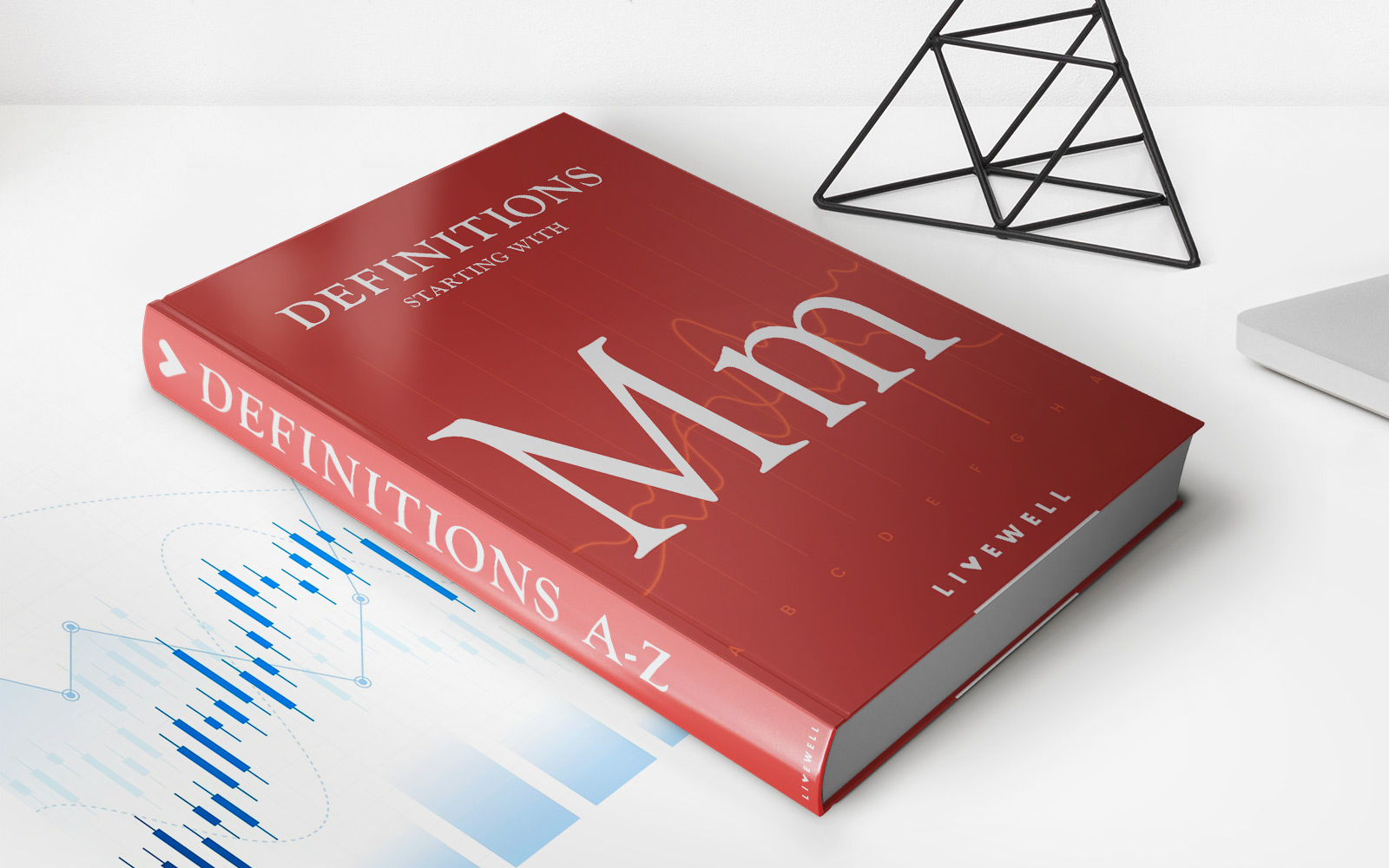Home>Finance>Why Has There Been An Increase In Cross Border Mergers And Acquisitions?


Finance
Why Has There Been An Increase In Cross Border Mergers And Acquisitions?
Published: February 24, 2024
Discover the reasons behind the surge in cross-border mergers and acquisitions in the finance industry and its impact on global markets. Explore the driving forces and implications.
(Many of the links in this article redirect to a specific reviewed product. Your purchase of these products through affiliate links helps to generate commission for LiveWell, at no extra cost. Learn more)
Table of Contents
Global Trends in Cross-Border Mergers and Acquisitions
Introduction
In recent years, the business landscape has witnessed a significant surge in cross-border mergers and acquisitions (M&A). This trend reflects the growing interconnectedness of global markets and the increasing willingness of companies to expand their operations beyond domestic boundaries. The allure of cross-border M&A lies in the potential for enhanced market presence, access to new technologies, cost savings, and diversification of business risks. Understanding the driving forces behind this trend is crucial for businesses, investors, and policymakers seeking to navigate the complexities of the global economy.
The following sections will delve into the key factors fueling the rise of cross-border M&A, shedding light on the motivations driving companies to pursue such strategic initiatives. From globalization and market expansion to the pursuit of innovation and economies of scale, each aspect plays a pivotal role in shaping the contemporary business landscape. By exploring these dynamics, we can gain valuable insights into the underlying forces propelling the surge in cross-border M&A activity and its implications for businesses and economies worldwide. Let's embark on this exploration to unravel the multifaceted nature of cross-border M&A and its far-reaching impact on the global business environment.
Globalization and Market Expansion
One of the primary drivers behind the increase in cross-border mergers and acquisitions is the relentless wave of globalization sweeping across industries. As companies seek to expand their footprint and gain access to new markets, cross-border M&A presents an enticing opportunity to establish a presence in foreign territories. In an era where competition knows no boundaries, tapping into international markets through strategic acquisitions has become a compelling strategy for companies aiming to bolster their global market share.
Globalization has not only intensified competition but has also fostered an environment where businesses strive to capitalize on the economic potential of diverse regions. By acquiring established entities or forming strategic partnerships in foreign markets, companies can leverage local expertise, consumer insights, and distribution networks to gain a competitive edge. This approach not only facilitates market expansion but also enables companies to navigate regulatory complexities and cultural nuances, which are integral to success in international business ventures.
Furthermore, globalization has blurred the lines between domestic and international markets, prompting companies to adopt a more expansive outlook in their pursuit of growth and sustainability. The interconnected nature of the global economy has rendered traditional geographic boundaries increasingly porous, compelling businesses to embrace cross-border M&A as a means of fortifying their position in the global marketplace.
As businesses navigate the complexities of globalization, the strategic rationale behind cross-border M&A becomes evident. It serves as a vehicle for market expansion, enabling companies to transcend geographical constraints and capitalize on the boundless opportunities offered by a globalized economy.
Access to New Technology and Innovation
In the fast-paced realm of modern business, access to cutting-edge technology and innovative solutions has emerged as a pivotal driver of cross-border mergers and acquisitions. Companies are increasingly recognizing the strategic imperative of staying at the forefront of technological advancements to maintain their competitive edge and drive sustained growth. In this context, cross-border M&A serves as a conduit for accessing new technologies, intellectual property, and innovative capabilities that may not be readily available within domestic markets.
By acquiring or partnering with foreign entities renowned for their technological prowess, companies can expedite their innovation initiatives and gain a significant competitive advantage. This approach enables businesses to harness the expertise and intellectual capital of global innovators, fostering a culture of continuous improvement and technological evolution.
Moreover, cross-border M&A facilitates the transfer of knowledge and best practices across borders, fostering a collaborative environment where diverse perspectives converge to drive innovation. This cross-pollination of ideas and expertise can catalyze breakthrough innovations, propelling companies to the forefront of their respective industries.
From advanced research and development capabilities to proprietary technologies, cross-border M&A empowers companies to bolster their technological arsenal and chart a path toward sustained relevance and market leadership. By leveraging the expertise and resources of acquired entities, businesses can navigate the complexities of technological disruption and position themselves as trailblazers in an era defined by rapid innovation.
Therefore, the pursuit of new technology and innovation through cross-border M&A represents a strategic imperative for companies seeking to fortify their technological capabilities and harness the transformative power of innovation to drive sustained growth and competitiveness.
Cost Savings and Economies of Scale
Cost savings and the realization of economies of scale stand as compelling incentives driving the surge in cross-border mergers and acquisitions. Through strategic consolidation with foreign entities, companies can unlock operational efficiencies and optimize their cost structures, thereby enhancing profitability and long-term sustainability.
One of the primary avenues through which cross-border M&A facilitates cost savings is through the streamlining of operations and overhead expenses. By integrating complementary business functions and eliminating redundancies, companies can achieve significant cost reductions while optimizing resource allocation. This rationalization of operations not only enhances efficiency but also positions the merged entity to navigate market challenges with agility and resilience.
Furthermore, cross-border M&A affords companies the opportunity to leverage economies of scale, particularly in industries characterized by high capital requirements and substantial fixed costs. Through the consolidation of production facilities, supply chains, and distribution networks, companies can achieve economies of scale, driving down unit costs and enhancing their competitive position in the market.
Moreover, cross-border M&A enables companies to harness procurement synergies, negotiate favorable terms with suppliers, and optimize their purchasing activities. This strategic procurement optimization empowers companies to drive down input costs and enhance their overall cost competitiveness, thereby bolstering their financial performance and resilience in the face of market uncertainties.
By pursuing cross-border M&A, companies can also capitalize on tax efficiencies and financial synergies, leveraging the advantages of favorable tax regimes and enhanced access to capital. This strategic financial engineering not only optimizes the tax liabilities of the merged entity but also unlocks opportunities for enhanced liquidity and financial flexibility.
Ultimately, the pursuit of cost savings and economies of scale through cross-border M&A underscores the strategic imperative for companies to optimize their cost structures, enhance their financial performance, and fortify their competitive position in an increasingly dynamic and challenging business environment.
Diversification and Risk Management
Cross-border mergers and acquisitions offer companies a strategic pathway to diversify their business portfolios and enhance risk management capabilities. In an era characterized by unprecedented market volatility and geopolitical uncertainties, the imperative of diversification as a risk mitigation strategy has assumed heightened significance.
Through cross-border M&A, companies can diversify their revenue streams and business lines, reducing their reliance on specific markets or product segments. This diversification strategy serves as a bulwark against market fluctuations and sector-specific risks, enabling companies to navigate economic downturns and geopolitical disruptions with greater resilience.
Furthermore, cross-border M&A facilitates geographical diversification, allowing companies to establish a presence in multiple regions and mitigate the impact of localized market downturns or geopolitical instabilities. By diversifying their geographic footprint, companies can insulate themselves from region-specific risks and capitalize on the growth potential offered by diverse markets.
Moreover, cross-border M&A empowers companies to diversify their operational capabilities and strategic assets, fostering a robust and well-rounded business portfolio. This diversification of capabilities enhances a company’s ability to adapt to evolving market dynamics and technological disruptions, positioning it to capitalize on emerging opportunities while mitigating sector-specific risks.
Additionally, cross-border M&A serves as a strategic enabler for risk management, allowing companies to pool their resources and expertise to navigate complex regulatory landscapes and geopolitical uncertainties. By fostering synergies and knowledge exchange, companies can enhance their risk assessment and management capabilities, fostering a culture of proactive risk mitigation and strategic resilience.
Therefore, the pursuit of diversification and enhanced risk management through cross-border M&A underscores the strategic imperative for companies to fortify their resilience in the face of market uncertainties and geopolitical complexities, positioning themselves for sustained growth and long-term success.
Conclusion
The surge in cross-border mergers and acquisitions underscores the evolving dynamics of the global business landscape, propelled by the imperatives of globalization, technological innovation, cost optimization, and risk management. As companies navigate the complexities of a rapidly changing market environment, cross-border M&A has emerged as a strategic imperative, offering a myriad of opportunities for market expansion, access to new technologies, cost savings, and diversification.
Globalization has redefined the contours of competition, compelling companies to transcend geographical boundaries in pursuit of sustained growth and market leadership. The strategic pursuit of new technologies and innovation through cross-border M&A has become instrumental in driving sustained competitiveness and relevance in an era defined by rapid technological evolution.
Moreover, the pursuit of cost savings and economies of scale through cross-border M&A underscores the imperative for companies to optimize their cost structures and enhance their financial performance in an increasingly dynamic and challenging business environment.
Furthermore, the strategic imperative of diversification and risk management through cross-border M&A highlights the pivotal role of M&A in fortifying companies’ resilience and strategic agility, enabling them to navigate market uncertainties and geopolitical complexities with confidence and resilience.
In conclusion, the surge in cross-border mergers and acquisitions reflects the strategic imperatives driving companies to embrace a globalized, innovation-driven, and resilient business paradigm. By harnessing the opportunities presented by cross-border M&A, companies can position themselves for sustained growth, enhanced competitiveness, and strategic resilience in an era defined by unprecedented market dynamics and transformative technological disruptions.














